Master of Healthcare Innovation

March 1, 2026
August 25, 2026
Overview
The Ohio State University’s online Master of Healthcare Innovation (MHI) program will teach you strategies to innovate solutions and lead change within any healthcare organization. This unique healthcare leadership development program is ideal for healthcare professionals seeking to earn their online master’s degree and elevate their careers into leadership positions. Combining the healthcare leadership focus of a traditional Master of Healthcare Administration (MHA) program with the business acumen of an MBA, this healthcare innovation degree gives you the best of both worlds and equips you to take the lead in the healthcare of tomorrow and beyond.
Why earn your online MHI degree from Ohio State?
This online MHI program is 100% online, which means you can take classes from wherever you are. We welcome students from various backgrounds and positions in healthcare administration, health information, insurance, pharmaceutical, and similar organizations looking to obtain their Master of Healthcare Innovation from Ohio State’s College of Nursing which is ranked #3 in the nation for Best Online Master’s in Nursing Programs by U.S. News & World Report. Those with a passion for design thinking and driving growth, change, and success in any healthcare organization will thrive especially well in this innovative care program. Upon graduation, you’ll be prepared to become a healthcare leader in the fields of healthcare administration, healthcare technologies, and patient care with the ability to affect change in today’s complex healthcare systems.
Not ready for a master’s program yet?
The online Healthcare and Leadership Innovation Certificate may be the right fit for you. The graduate certificate program can be completed in just two semesters, and all courses can be transferred to the online MHI degree when you are ready to earn your master’s.
Frequently Asked Questions
Innovation in healthcare is empowering professionals in disciplined disruption of highly complex and risk-averse organizations in order to achieve better outcomes. In Ohio State’s 100% online Master of Healthcare Innovation program, you will meet fellow students who come from diverse backgrounds, which allows cross-functional collaboration that translates into actionable knowledge you can apply to your current work. In this healthcare innovation degree, you will be prepared to leverage disruptive thought, creative approaches, and human-centered design as a leader in any type of healthcare industry.
The Master of Healthcare Innovation program is often compared to an MBA. However, this MHI degree is focused on innovative leadership and is most applicable to middle management rather than executive-level or “C-suite” roles. MBAs are often focused on finance, marketing, business policy, and executive-level leadership. This Master of Healthcare Innovation degree emphasizes healthcare policy, leadership at any job level, innovative thinking, and human-centered design. The MHI courses are less focused on the finance and marketing found in business degrees. If this type of healthcare focus is what you are looking for, then you should enroll in the Master of Healthcare Innovation vs an MBA.
Yes, however, your Master of Healthcare Innovation practicum and project work should differ from your paid work.
No, you are not required to come to the Ohio State campus for this Master of Healthcare Innovation program. All courses are 100% online, so you can complete them wherever you are. You are invited and encouraged to attend graduation on campus when you complete your degree. While this is not required, it’s a great chance to meet your classmates and celebrate your amazing achievement together.
Yes, most courses will include a synchronous component, which is a time during the week when you will be required to be logged in online for class. These classes are typically once every other week, on a weekday, later in the day or evening, and scheduled in Eastern time. There may be classes or times that differ from these norms.
Once you submit your contact information, a dedicated Enrollment Advisor will connect with you shortly to provide more details about this online program, provide one-on-one guidance, and answer any questions you may have as you navigate the application process.
Related Content
Related Content
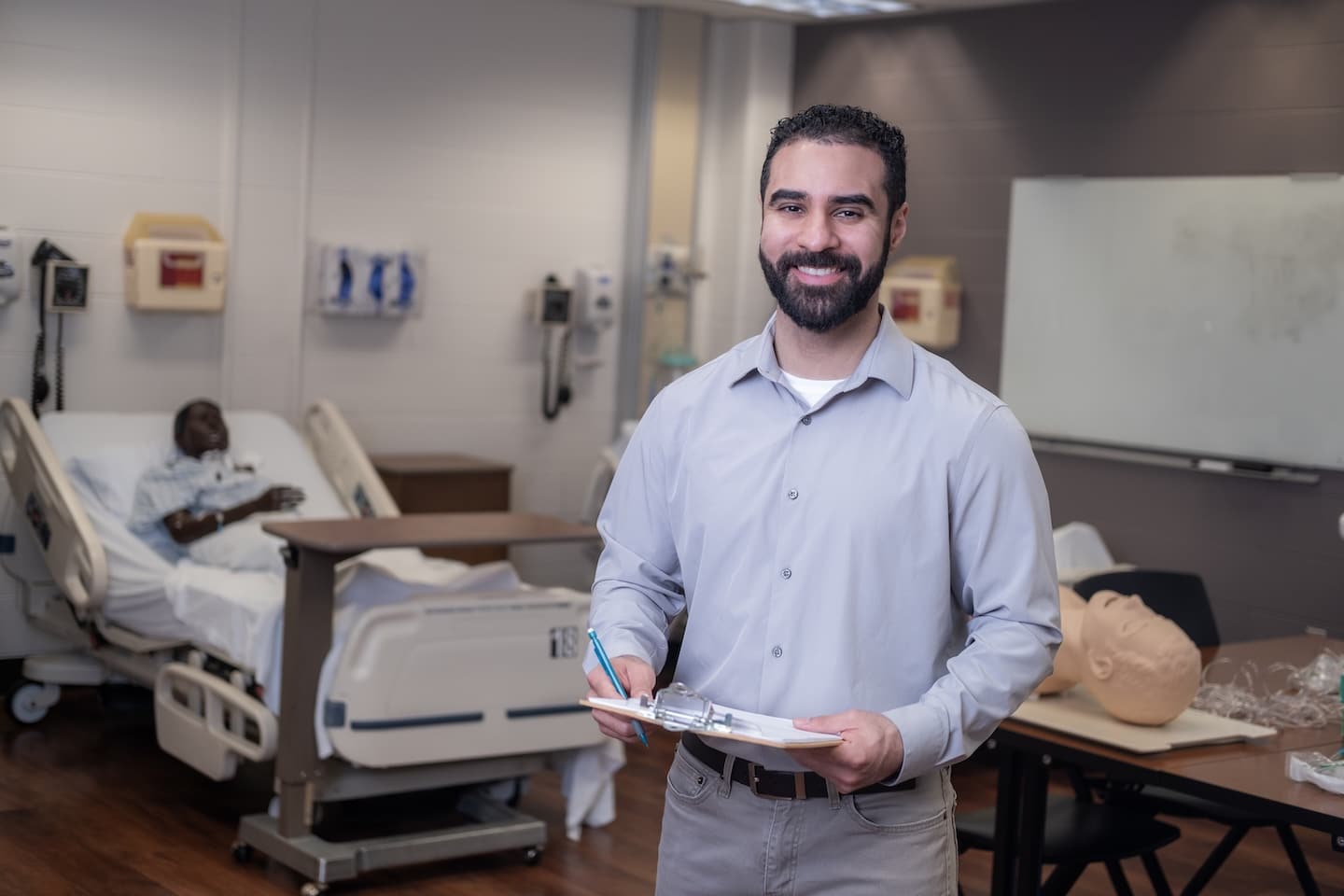
3 impacts of an online Master of Healthcare Innovation degree

Caudill sets out to change the world through healthcare

From Volume to Value: A Shift in Healthcare
Academic Calendar
The Master of Healthcare Innovation program admits students once-per-year for the Autumn semester. Students may take classes during each Autumn, Spring, and Summer semester once enrolled. This online healthcare masters degree typically requires five semesters of part-time study to complete.
Academic Calendar
The Master of Healthcare Innovation program admits students once-per-year for the Autumn semester. Students may take classes during each Autumn, Spring, and Summer semester once enrolled. This online healthcare masters degree typically requires five semesters of part-time study to complete.
Admission Criteria
Completed a bachelor’s degree
- You may have a bachelor’s degree in any area. Your degree must be from an accredited bachelor’s program. You may apply to the Master of Healthcare Innovation while your bachelor’s degree is still in progress, but you must receive the degree prior to beginning enrollment in the master’s program.
Minimum of a 3.0 cumulative GPA on a 4.0 scale in the last degree earned that is relevant to the program of study
- GPAs are reviewed by Ohio State’s Graduate and Professional Admissions Office. Applicants whose GPAs are below 3.0 may still apply and be considered for admission.
Who We Are Looking For
Your application will be reviewed using a holistic approach, meaning all aspects of who you are as a candidate will be considered. This assessment will include academic preparedness and formative experiences in your professional background, schooling and life. We are also looking for candidates that demonstrate a preferred set of attributes and strengths described in the following list. This list is not all encompassing, but is meant to help guide you in what you may wish to highlight in your written application materials and in your recorded online video interview:
- Passion for innovation or past examples of pursuing innovation
- Demonstration of leadership
- Communication and interprofessional collaboration skills
- Creativity and out-of-the-box thinking
- Diversity of thought, perspective and experience
- Any experience with the healthcare system
How to Apply
You can complete an application online at The Ohio State’s University Graduate and Professional Admissions Office website. A non-refundable $60 fee is required at the time of submission of the application.
To complete your application and verify your degree and undergraduate GPA, you must submit official transcripts from all colleges and universities that you have previously attended at either the undergraduate or graduate levels. This includes transcripts for any post-secondary courses taken during high school or of coursework that appears as transfer credit on another transcript. Transcripts from The Ohio State University do not need to be submitted.
Transcripts should be submitted directly by the sending institution by mail or electronic transfer to be considered official. Please request your transcripts be sent early so they arrive before the deadline. Transcripts can be sent to:
The Ohio State University
Graduate Admissions Office
P.O. Box 182004
Columbus, OH 43218-2004
or
When applying:
You may upload scanned copies of official transcripts, diplomas, or degree certificates to the online application system. Note: You do not need to submit transcripts for coursework or degrees earned from The Ohio State University.
These scans help form a complete application packet, but they do not replace the need for official documents.
What is not accepted. These types of documents will not be used for degree verification or GPA calculation:
Advising reports
Unofficial transcripts or scans labeled “UNOFFICIAL”
Documents with a URL across the top
Transcripts missing the institution’s name, seal, stamp, or GPA
Your resume or curriculum vitae (CV) should use a similar format to what you would use for a job application. You should include your previous education, professional experiences and any community service, volunteer activities, publications, research and leadership experiences on your resume or CV. You may submit this document at the time of application or after by way of the Admissions Uploader.
The purpose and goals statement is a one- to two-page document that should describe your goals and how they relate to the MHI program. Discuss your academic goals and how this program will help you achieve your career aspirations. Include what innovation means to you and how you utilize innovation to lead others. You may submit this document at the time of application or after by way of the Admissions Uploader.
The portfolio is an exercise that will demonstrate your creativity. Fill a one (1) page, 8.5×11″ space to showcase your skills and ideas. There are no other limits to what you can create and can use words, pictures, music, etc. Just be sure that the portfolio can be saved as a PDF for submission. You may submit this document at the time of application or after by way of the Admissions Uploader.
You are required to complete a recorded online video interview through an online portal called HireVue, during which you will be recorded answering a brief selection of questions regarding your interests in the MHI program. This interview can be completed at any time during the application window. However, we ask that you do so only after you have completed and submitted your application. Note: You must complete the recorded online video interview before the application deadline. For further details, instructions, and links to the online portal click here.
During the application you will be asked to provide the names and email addresses of three recommenders. Once the application is submitted, an email will be automatically generated and sent to your recommenders with and further instruction on how to submit their letters of recommendation. We encourage you to submit your application far in advance of the deadline so that your recommenders have ample time to upload their letters. Letters of recommendation should not be mailed and you may not personally submit letters of recommendation.
Letters of recommendation should be submitted from individuals who are familiar with your academic ability, professional experience, and potential to succeed a graduate program. We suggest providing your recommenders with information on the degree and specialty to which you are applying and with a copy of your purpose and goals statement. Finally, make them aware of the submission process and the application deadline by which they must submit their letters.
Details regarding what English Proficiency tests are acceptable, the scores required, and how to submit scores may be found on The Ohio State University Graduate and Professional Admissions office’s website.
Failure to complete all required steps of this application process by 11:59 pm ET on the day of the posted deadline will result in your application not being considered for admission, with no exceptions.
Most applicants may review the status of their application anytime at appstatus.osu.edu. If you are currently or have been previously enrolled in a degree granting graduate program at Ohio State for any length of time, you are considered a Graduate Intra-University Transfer and can contact nursing@osu.edu to review your application status.

The Ohio State University participates in the State Authorization Reciprocity Agreements (SARA).
SARA is a national initiative that increases student access to distance education courses and programs while maintaining compliance with state regulations. Institutions participating in SARA can offer educational opportunities in all 49 SARA member states, the District of Columbia, the U.S. Virgin Islands and Puerto Rico without seeking individual approval in each state.
California is not a SARA member state, however, OSU may offer online courses and programs to students located in California under the California Private Post-Secondary Act of 2009.
The Application Process
Once you understand your program’s admission criteria, please note the application deadline. You’ll need a quiet space and a variety of materials for your application. To learn more, please see our Admissions page for the full process. Ready to Apply? Find your application here.
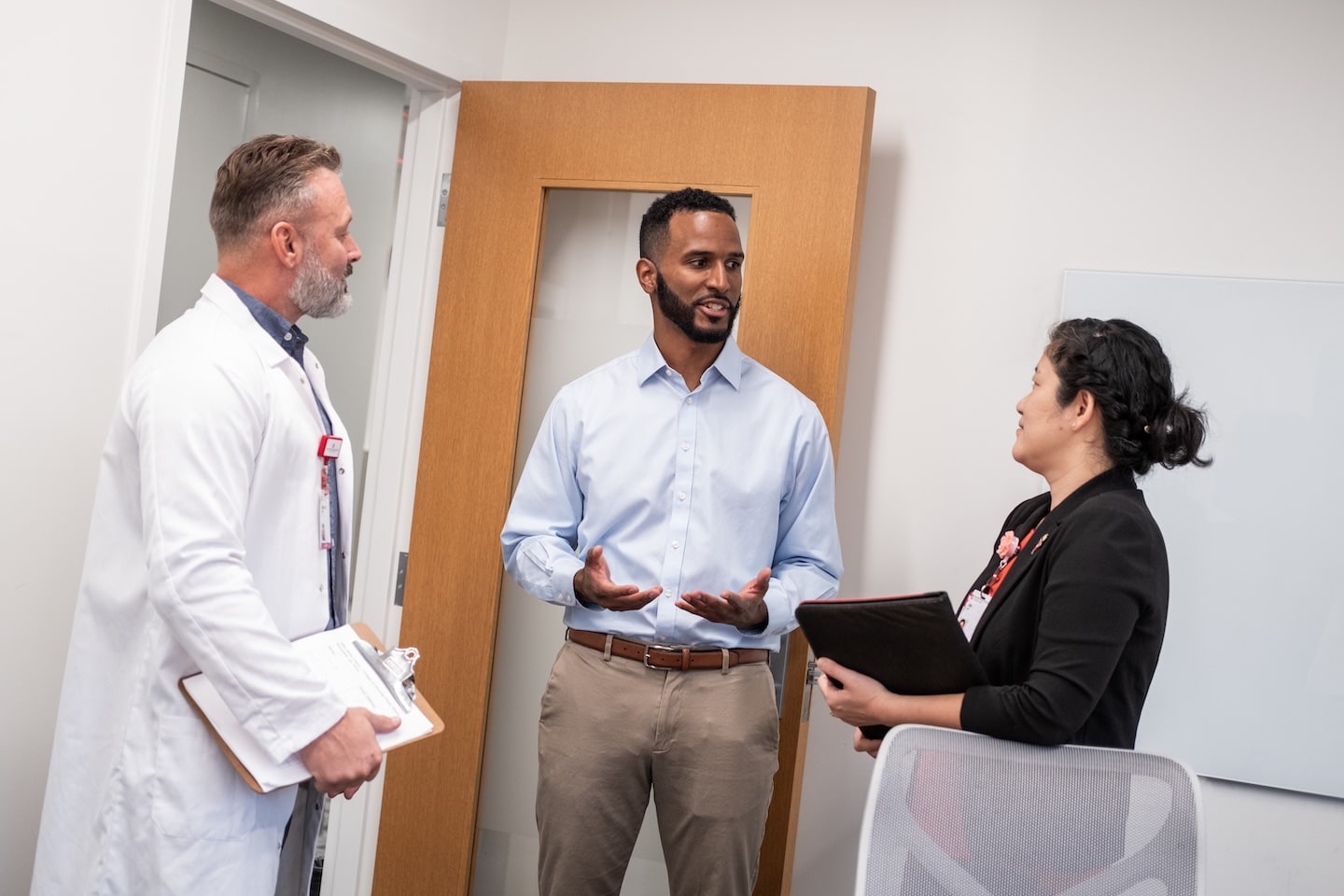
Career Outlook
The online Master of Healthcare Innovation program will broaden your knowledge base and healthcare leadership skills within the medical industry, preparing you to solve real-world challenges faced in many types of healthcare organizations. Many graduates of the MHI program often see an increase in their salary and job growth potential, making it a strategic investment in your future. If you are looking for a career as a Medical and Health Services Manager, Administrative Services and Facilities Manager, Health Information Technologist, Nurse or Physician Executive, or are looking to increase your salary and advance your healthcare leadership career, then this program can prepare you for that next step in your journey.
Top Occupations by Median Income
What They Do
Determine and formulate policies and provide overall direction of companies or private and public sector organizations within guidelines set up by a board of directors or similar governing body. Plan, direct, or coordinate operational activities at the highest level of management with the help of subordinate executives and staff managers.
Work Activities
Direct or coordinate an organization’s financial or budget activities to fund operations, maximize investments, or increase efficiency. Confer with board members, organization officials, or staff members to discuss issues, coordinate activities, or resolve problems. Prepare budgets for approval, including those for funding or implementation of programs.
Wage Range
- Entry Level: $73,710
- Mid Level: $206,420
- Senior Level:
Job Outlook
Bright
Projected Growth
5.5%
Related Careers
- Compliance Managers
- General and Operations Managers
- Public Relations Managers
- Social and Community Service Managers
- Treasurers and Controllers
Job Sectors
- Administration and Management
- Personnel and Human Resources
- Customer and Personal Service
- English Language
- Economics and Accounting
What They Do
Plan, direct, or coordinate medical and health services in hospitals, clinics, managed care organizations, public health agencies, or similar organizations.
Work Activities
Direct, supervise and evaluate work activities of medical, nursing, technical, clerical, service, maintenance, and other personnel. Develop and maintain computerized record management systems to store and process data, such as personnel activities and information, and to produce reports. Plan, implement, and administer programs and services in a health care or medical facility, including personnel administration, training, and coordination of medical, nursing and physical plant staff.
Wage Range
- Entry Level: $69,680
- Mid Level: $117,960
- Senior Level: $219,080
Job Outlook
Bright
Projected Growth
28.5%
Related Careers
- Clinical Nurse Specialists
- Emergency Medicine Physicians
- Health Education Specialists
- Health Informatics Specialists
- Social and Community Service Managers
Job Sectors
- Administration and Management
- English Language
- Customer and Personal Service
- Personnel and Human Resources
- Education and Training
What They Do
Plan, direct, or coordinate one or more administrative services of an organization, such as records and information management, mail distribution, and other office support services.
Work Activities
Prepare and review operational reports and schedules to ensure accuracy and efficiency. Set goals and deadlines for the department. Acquire, distribute and store supplies.
Wage Range
- Entry Level: $64,740
- Mid Level: $108,390
- Senior Level: $200,010
Job Outlook
Bright
Projected Growth
6.2%
Related Careers
- Executive Secretaries and Executive Administrative Assistants
- Facilities Managers
- First-Line Supervisors of Office and Administrative Support Workers
- General and Operations Managers
- Project Management Specialists
Job Sectors
- Customer and Personal Service
- Administration and Management
- English Language
- Administrative
- Computers and Electronics
What They Do
Apply knowledge of nursing and informatics to assist in the design, development, and ongoing modification of computerized health care systems. May educate staff and assist in problem solving to promote the implementation of the health care system.
Work Activities
Translate nursing practice information between nurses and systems engineers, analysts, or designers, using object-oriented models or other techniques. Use informatics science to design or implement health information technology applications for resolution of clinical or health care administrative problems. Develop or implement policies or practices to ensure the privacy, confidentiality, or security of patient information.
Wage Range
- Entry Level: $63,160
- Mid Level: $103,790
- Senior Level: $166,030
Job Outlook
Bright
Projected Growth
10.7%
Related Careers
- Clinical Data Managers
- Health Education Specialists
- Health Information Technologists and Medical Registrars
- Medical and Health Services Managers
- Nurse Practitioners
Job Sectors
- Computers and Electronics
- English Language
- Medicine and Dentistry
- Education and Training
- Customer and Personal Service
What They Do
Apply knowledge of healthcare and information systems to assist in the design, development, and continued modification and analysis of computerized healthcare systems. Abstract, collect, and analyze treatment and followup information of patients. May educate staff and assist in problem solving to promote the implementation of the healthcare information system. May design, develop, test, and implement databases with complete history, diagnosis, treatment, and health status to help monitor diseases.
Work Activities
Assign the patient to diagnosis-related groups (DRGs), using appropriate computer software. Compile medical care and census data for statistical reports on diseases treated, surgery performed, or use of hospital beds. Design databases to support healthcare applications, ensuring security, performance and reliability.
Wage Range
- Entry Level: $39,120
- Mid Level: $67,310
- Senior Level: $112,130
Job Outlook
Bright
Projected Growth
16.3%
Related Careers
- Clinical Data Managers
- Clinical Research Coordinators
- Health Informatics Specialists
- Medical Records Specialists
- Patient Representatives
What They Do
Directly supervise and coordinate the activities of clerical and administrative support workers.
Work Activities
Supervise the work of office, administrative, or customer service employees to ensure adherence to quality standards, deadlines, and proper procedures, correcting errors or problems. Resolve customer complaints or answer customers’ questions regarding policies and procedures. Provide employees with guidance in handling difficult or complex problems or in resolving escalated complaints or disputes.
Wage Range
- Entry Level: $43,920
- Mid Level: $66,140
- Senior Level: $102,980
Job Outlook
Bright
Related Careers
- First-Line Supervisors of Entertainment and Recreation Workers, Except Gambling Services
- First-Line Supervisors of Helpers, Laborers, and Material Movers, Hand
- First-Line Supervisors of Mechanics, Installers, and Repairers
- First-Line Supervisors of Non-Retail Sales Workers
- First-Line Supervisors of Passenger Attendants
Job Sectors
- Administration and Management
- Customer and Personal Service
- Administrative
- English Language
- Computers and Electronics
National occupational information in Ohio State Online’s Career Outlook tool is sourced from O*NET Online and the U.S. Bureau of Labor Statistics (BLS). The median annual wage displayed to the right of each occupational title above is based on the BLS Employment Projections program. Outlook and percent change indicate projected growth or decline over the next 10 years.
Curriculum
The Master of Healthcare Innovation program is completely online with no on-campus requirements. The healthcare innovation courses are a combination of synchronous and asynchronous learning. The synchronous elements allow you to participate in the course alongside your classmates at scheduled times during the week. The asynchronous components give you the flexibility to complete projects and assignments according to your own schedule. This healthcare innovation program can be completed in just 2 years of part-time study.
Students learn advanced concepts of innovation in a high-performing organization and the leadership behaviors that sustain innovation. Students discuss cross-disciplinary theories of innovation for improving health and quality of healthcare. Students are introduced to innovation competencies including positive deviance, complexity leadership, and disruptive innovation.
This course encourages students to discover themselves as leaders to maximize innovation and organizational impact. Students explore their own leadership behaviors to manage their energy better and find balance in order to perform at a peak level and positively impact the advancement of innovation in healthcare.
This course explores strategies for outcome measurement to enhance organizational performance and innovation, and how to leverage technology to measure and integrate outcomes into the daily practice in healthcare. The course emphasizes technology’s role in the measurement of outcomes at the personal, the professional, the organizational, and the system level.
This course explores various elements of organizational operations that fully impact the organizations and system in which they work. This course will help you develop basic skill sets in financial and business operations in healthcare organizations. You will learn specific skills in budgeting, planning, financial analysis, program development and implementation, and resource identification and use.
This course builds foundational knowledge of complex adaptive system characteristics in healthcare. It will explore complex adaptive system theory, systems thinking and network relationships as the context of leadership action and innovation. This course focuses on healthcare innovation from a systems perspective emphasizing the importance of networks, relationships, culture, and feedback.
This course develops leadership behaviors that facilitate constructive conversations, interactions, and outcomes through communication and coaching techniques. The course explores the role of relationships and communication in healthcare innovation, and challenges the traditionally negative view of conflict, by reframing it as a valuable and normative behavior in high-performing organizations.
This course introduces the foundations of healthcare policy at the local, state, national, and international levels and explores the associations between policy and healthcare innovation.
This course provides a framework and tools for innovation leaders to address challenges within healthcare systems. Principles of design thinking and design principles of functionality, value, and aesthetics are discussed and applied to analysis of complex healthcare problems. The steps involved in the design process will be applied to your Capstone Project.
This course will focus on the use of evidence-based practice, clinical decision making, and patient preferences as a core competency of innovation leaders.
This course will address your individual professional and career development. You will develop a roadmap for your professional development and engage in regular discussions with prominent healthcare and innovation leaders.
The Capstone course represents the synthesis of the Master of Healthcare Innovation coursework into a team innovation project. Utilizing the Business Case for Innovation, Capstone teams will build off of the work started in the Design Thinking course. You will be required to develop an implementation and evaluation plan for your Capstone idea.
Understanding Online Course Types
As you research the right online program for you, you likely will come across the terms “asynchronous” and “synchronous.” Learn what these terms mean and how they’re important to consider when understanding how a program will fit into your life.
Learn More

Program Faculty

Michael Ackerman, PhD, RN, FCCM, FNAP, FAANP, FAAN
Clinical Professor & Director of Master of Healthcare Innovation Program
Michael Ackerman is the Director of the Master in Healthcare Innovation Program and Professor of Clinical Nursing, and the Director of the Center for Healthcare Innovation and Leadership at the Ohio State University College of Nursing. He also maintains a clinical practice as an acute care nurse practitioner at St Joseph’s Neighborhood in Rochester, NY He is also the Owner of Ackerman Consultants.
Dr. Ackerman has held just about every position a nurse could hold in academia and clinical practice from candy striper to senior director. His entire career has been dedicated to critical care with numerous publications as well as invitations to speak nationally and internationally. His research and writing has focused on a variety of clinical topics including sepsis, airway management, hemodynamics, innovation and leadership. His innovation work has led to many disruptions in clinical practice and health system change. He has been recognized for his various contributions with various fellowships including; Fellow in Critical Care Medicine, Fellow in the National Academy of Practice, and Fellow in American Academy of Nurse Practitioners.
Dr. Ackerman completed his BSN from Niagara University, his MSN and DNS from The State University of New York at Buffalo, a post-masters certificate as an Acute Care Nurse Practitioner from the University of Rochester and is currently enrolled in a Design Thinking certificate program at Rochester Institute of Technology.
Daniel Weberg, PhD, MHI, RN
Clinical Assistant Professor of Practice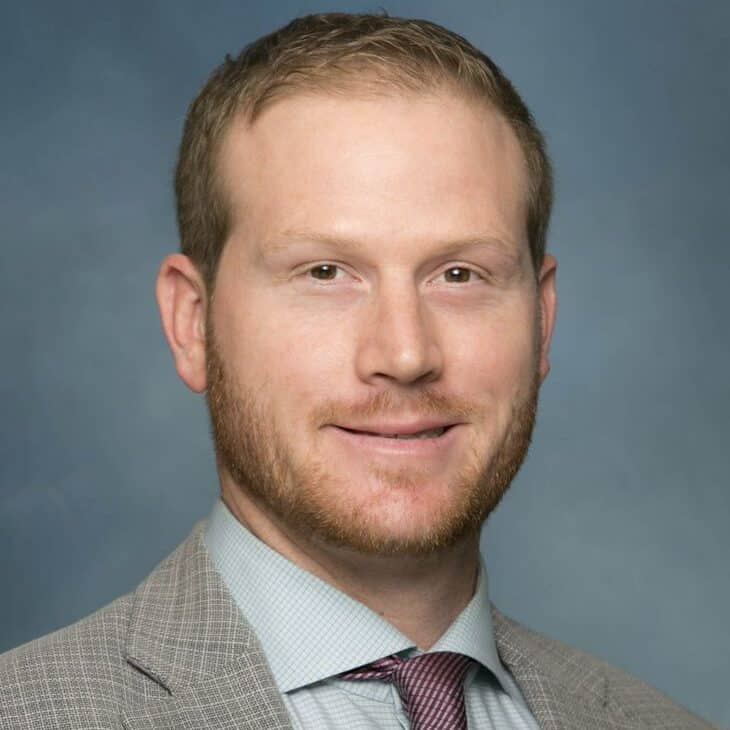
Stephen McGhee, DNP, MSc, RN, VR, FFNMRCSI, FNAP, FAAN
Associate Clinical Professor and Director of International Education Initiatives
Taura Barr, PhD, RN, FAHA
Associate Clinical Professor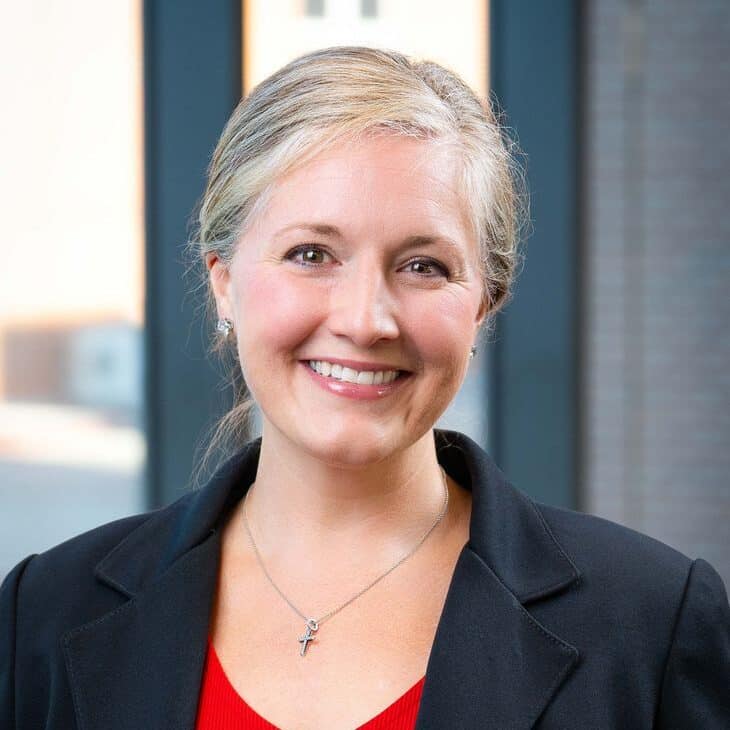
Todd Tussing, DNP, RN, CENP, NEA-BC, EBP-C, FNAP
Assistant Clinical Professor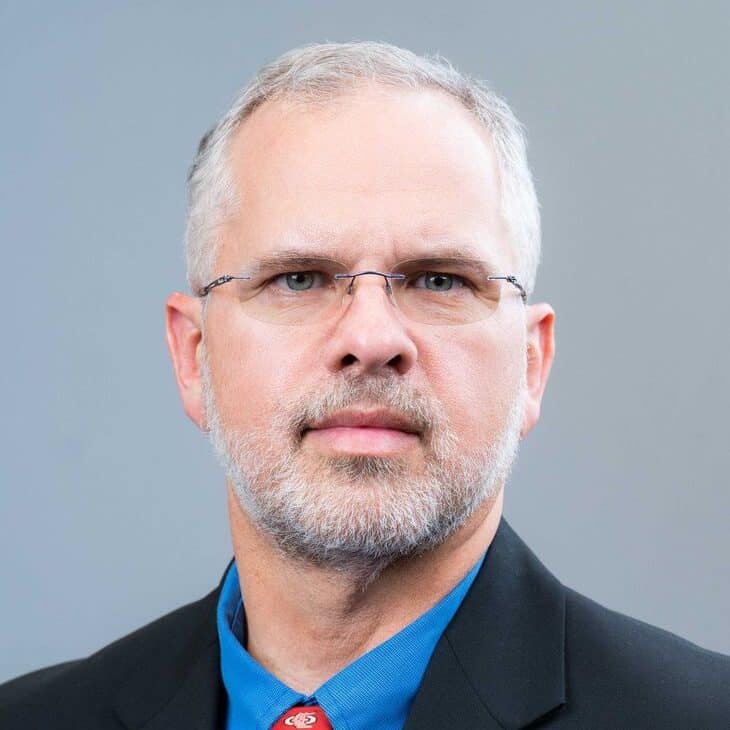
Amy Jauch, DNP, RN, CNE
Assistant Clinical Professor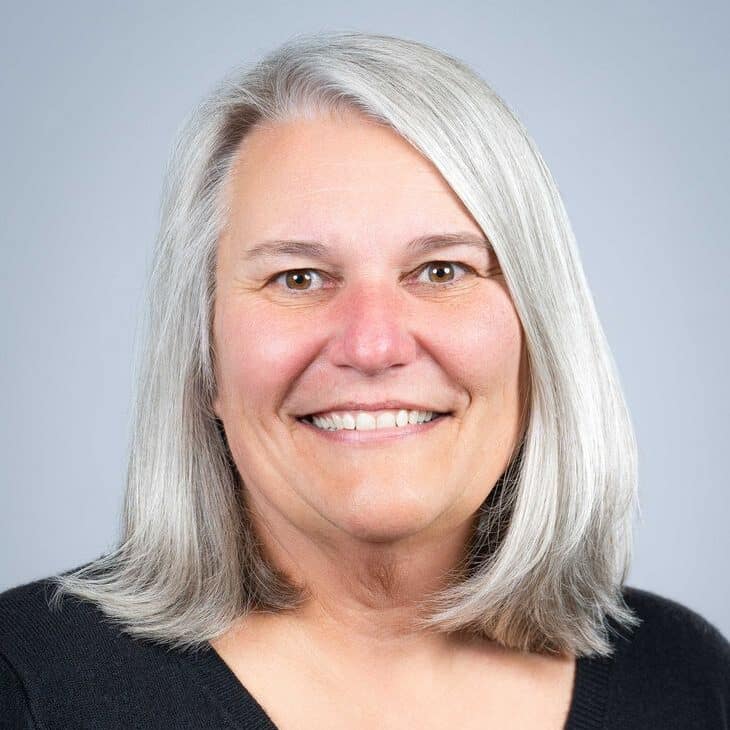
Stephanie Justice, DNP, RN, CHSE
Lecturer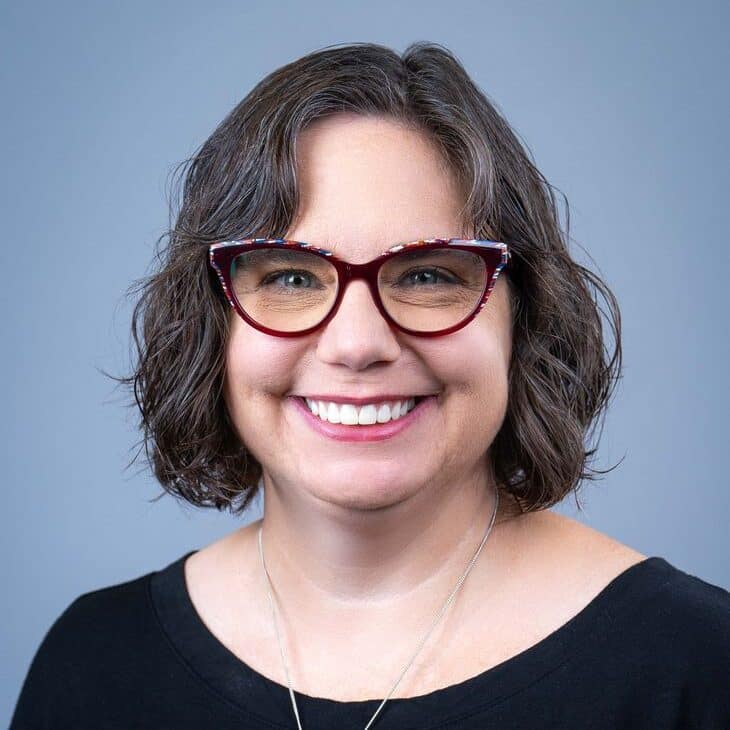
Sheila Whalen, DNP, NI-BC
Lecturer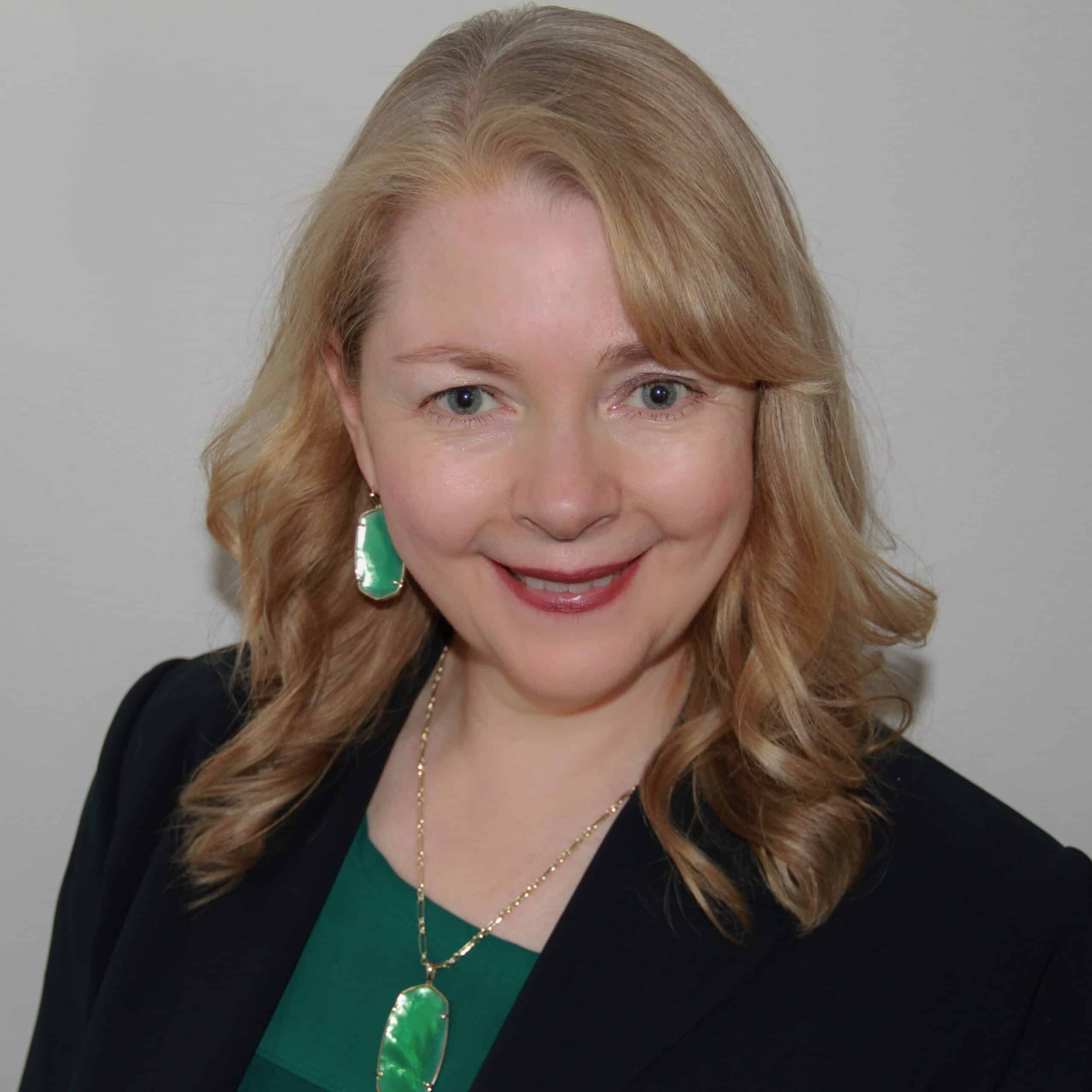
Adam Fromme
Lecturer
Testimonials
Hear why our students and graduates chose the Master of Healthcare Innovation at The Ohio State University!
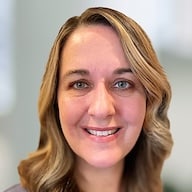
“Initially, I was worried about the unknown of going back to school after 30 years. Quite honestly, I loved it. I not only gained so much more through a multi-faceted approach of teaching, videos, speakers, group assignments, and interactions, but also was exposed to technology and programs that my company has since adopted. Therefore, I felt like I was ahead of the game at work and better positioned for success.”
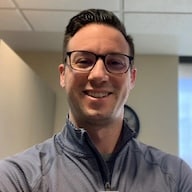
“The instructors were phenomenal. Not only were they experts in healthcare innovation, but they truly helped transform the way I think about change management, improvement, and innovation.”

“The MHI program was really great for me. Being a full-time mother of three, I thought it offered a lot of flexibility. I changed careers in the middle of it, and I went from working three days a week to working five days a week, but I still felt the program was very doable.”

“The program is a journey. From clinical to administrative, I’m learning how to change the healthcare industry for the benefit of the patient.”

“I valued the camaraderie I developed with the other MHI students in my cohort. We were all advancing our education coming from various backgrounds. This program challenged me to become comfortable with the uncomfortable and take on new challenges related to my career and professional development.”

“Unequivocally, the networks that I have built through the program have been one of the greatest assets I have obtained. The program is paving a path for me to advance within my organization as we strategically advance healthcare.”

“What initially attracted me to this program was how different the Master of Healthcare Innovation program was compared to other healthcare master’s programs. It focused on innovative solutions and real-world applications, rather than just traditional healthcare management.”

“I feel like I learned skills that are actually useful in the practice setting and have made me a better leader.”
Tuition Fee Overview
Below are the tuition fees you can expect with your program. Estimates are based on the expenses typical of an Ohio State Online student, who would take 6 credit hours each semester as a part-time student, or 8 credit hours each semester as a full-time student in graduate programs. Actual costs may vary.
| Tuition Fees | Per Credit Hour (unless otherwise noted) | Part-Time – Total Cost Per Semester |
|---|---|---|
| Instructional Fee | $829.75 | $4,978.50 |
| General Fee | $32.63 | $195.78 |
| Program Fee | $250.00 | $1,500.00 |
| Nursing Distance Learning Fee | $228.00 (per semester) | $228.00 |
| Distance Learning Fee | $100.00 (per semester) | $100.00 |
| Non-Resident Surcharge (if applicable) | $200.00 (per semester) | $200.00 |
Tuition fees are subject to change. The table above serves as a guide and not an official bursar’s bill. Full-Time costs are total tuition costs per semester.
Financial Aid Resource
Financial Aid Resource
Related Articles
Related Articles

How to ask your employer for tuition reimbursement
How to Pay for Your Online Program

How to find and transfer prerequisite courses to Ohio State: A step-by-step guide
Get Started
Connect with a knowledgeable Enrollment Advisor who can help answer your questions and explain different aspects of the more than 80 online degrees and certificates offered at Ohio State. They are here to help you on your education journey.


